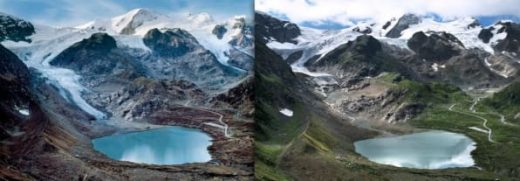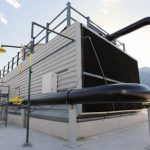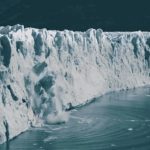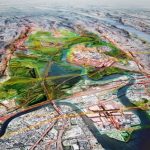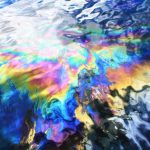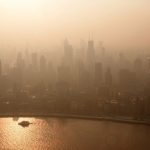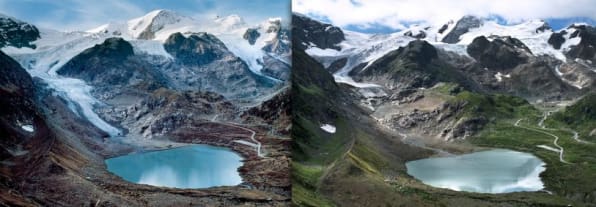Before-And-After Photos Show How Horrifyingly Fast The World’s Glaciers Are Melting
In 1850, there were 150 glaciers in Glacier National Park. Now there are 25. Within 15 years, scientists project, all the glaciers may have melted away.
Similar melting is happening around the rest of the world (though other glaciers may survive a bit longer). A set of before-and-after photos published in the Geological Society of America’s GSA Today journal documents some of the changes. In Alaska, the melting Mendenhall Glacier shrank nearly 1,800 feet between 2007 and 2015. In Switzerland, the Trint Glacier retreated twice as much over roughly the same period. In Peru, the Qori Kalis Glacier shrank more than 3,700 feet between 1978 and 2016.

Researchers collaborated on the paper with photographer James Balog–featured in the documentary Chasing Ice–who began traveling to photograph glaciers in 2007 in the Extreme Ice Survey.
“It’s very hard to cast the photographic evidence aside as being an opinion,” co-author Patrick Burkhart, a geology and geography professor at Slippery Rock University, tells Fast Company.
The Extreme Ice Survey team has placed cameras in 36 remote locations in the Rockies, the Andes, the Alps, the Himalayas, Iceland, South Georgia, Antarctica, and Alaska. The custom kits are designed to automatically take photos every half hour during the day. The team periodically travels to collect the memory sticks inside.
Some of the photos have been used by researchers studying glaciers, though Balog began taking them as a way to viscerally communicate the effects of climate change to the public.
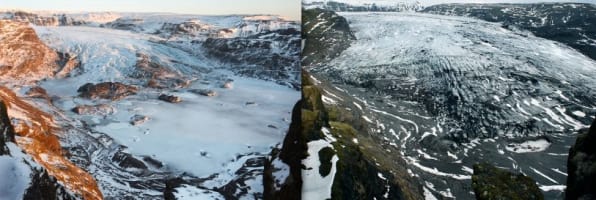
“I realized that, yes, glaciers are the canary in the global coal mine, and they’re definitely a way we can see and touch and hear and feel climate change in action,” he says. “I want to make that immediate and comprehensible for the general public. A lot of the climate change that goes on in the world is not very visual–it’s subtle. The air is changing around you, this invisible substance, and weather conditions around you change, but they’re changing over time. They’re changing over a lot of time. It’s hard to express climate change visually.”
The photos make the speed of change in the cryosphere–the portion of Earth covered in ice–obvious. Those changes are happening faster than researchers initially predicted. “Our thoughts from a decade ago are being exceeded by what’s happening today,” says Burkhart. “Our thoughts from two decades ago were being exceeded by what was happening a decade ago. The loss of ice is accelerating.”
“There’s the old expression ‘glacial pace’–you know, that glaciers aren’t supposed to do much,” says Balog. “Nothing much is supposed to happen when you look at a glacier. But these pictures have demonstrated that that’s an oxymoron. There isn’t any such thing as glacial pace because they can be quite reactive and quite responsive to the environment around them.”
The glacial retreat is being driven by climate change, primarily warmer air temperatures. For glaciers that flow to the ocean, warmer sea water and changing ocean currents also play a role.
As the ice melts, some of it contributes to rising seas. It also shrinks a critical source of drinking water in some communities. Burkhart has studied the risk in the Andes in particular.
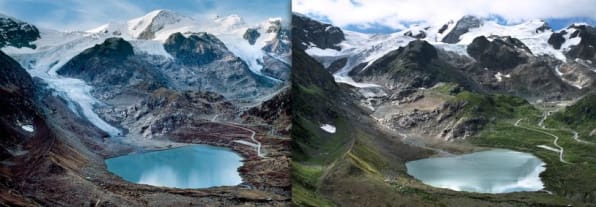
“The people who pull their drinking water from rivers fed by glaciers are very cognizant that when these rivers are gone, they’re going to get drier during drought and during summer months,” he says. “Those people look at the loss of ice really with desperation, knowing that tremendous challenge is coming their way. Because if they had an alternative water supply, they probably would have turned to it already.”
While glacial retreat may be difficult to stop now, even if the world takes aggressive action to cut climate pollution, the photographs of disappearing ice can help convince the minority of people who doubt that climate change is occurring.
“I’ve had people who were in the oil and gas industry come up to me and say, ‘Well, I really just thought this whole thing was a bunch of liberal progressive stuff . . . and I didn’t believe it because I thought it was tied to those sorts of agendas,’” says Balog. “‘But you seem like a straightforward guy and you brought me information I can understand, and I’m converted. I get it.’”
After 10 years of working on the Extreme Ice Survey, the team plans to continue. Earth Vision Institute, the nonprofit that runs the program, is currently trying to raise money to return to some of the areas the team hasn’t been able to document in recent years (each journey is both expensive and dangerous). It hopes to add more cameras in some locations to help researchers better calculate the loss of ice. Balog also travels giving lectures, trying to share the images and story with as many people as possible.
“People are always saying, ‘Do you believe in climate change?’” he says. “My answer is always, ‘I do not believe in climate change. Belief is about ideology. Belief is about dogma and doctrine. And the problem with the climate change discussion in this country is that the reactionary forces have been extremely eager to turn it into a question of dogma, doctrine, and belief. I think climate change is an issue with evidence. And if we look at the evidence rationally we can comprehend it. We can see what’s happening.”
(58)

